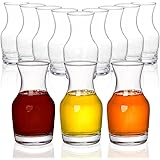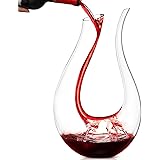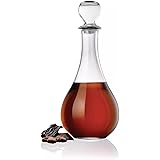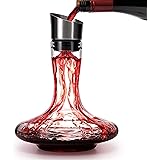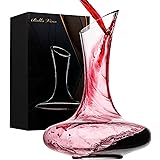Mastering Wine Etiquette: Essential Tips for Beginners
Do you ever feel a little overwhelmed when ordering or tasting wine in a social setting? Perhaps you watch the video above and find yourself nodding along, realizing there’s more to wine appreciation than just uncorking a bottle. Understanding basic wine etiquette can significantly enhance your dining experiences and social interactions, making you feel more confident and sophisticated. This guide will help you navigate common wine situations with grace and knowledge, transforming you into a more assured wine enthusiast.
Holding Your Wine Glass with Poise
The way you hold your wine glass speaks volumes, and it is also surprisingly practical. Many people instinctively grab the bowl of the glass, but this is a common mistake. Holding the glass by its bowl can quickly leave unsightly fingerprints, which detracts from the wine’s visual appeal. Moreover, the warmth from your hand can inadvertently raise the wine’s temperature, especially for white wines or sparkling varieties that are best served chilled. This subtle change can alter the intended flavor profile, diminishing the winemaker’s efforts.
Instead, the preferred method involves holding the wine glass by its stem. This keeps your fingers away from the bowl, preventing smudges and maintaining the wine’s optimal temperature. If you find the stem delicate or have larger hands, holding the glass by its base is also perfectly acceptable. Both methods allow the wine to be presented beautifully and ensure its temperature remains consistent throughout your enjoyment.
The Art of Toasting: A Bell-Like Sound
Toasting is a cherished tradition, but even this simple gesture has its own specific etiquette. When raising your glass for a toast or a “cheers,” avoid clinking your glasses together by the rim. The rim is typically the thinnest and most fragile part of a wine glass, making it highly susceptible to chips or cracks. An unfortunate mishap could spoil the celebratory mood and result in a broken glass.
The elegant approach is to gently tap the glasses together at the bowl, just below the rim. This technique produces a pleasant, resonant “bell-like” sound without risking damage. This mindful way of toasting shows respect for the glassware and for the occasion itself, ensuring everyone can participate safely and joyfully.
Opening a Wine Bottle Smoothly
Opening a bottle of wine should be a smooth, controlled process, not a wrestling match. While it might seem tempting to pull a stubborn cork with brute force, this can often lead to spills or even breaking the cork, which makes retrieval much harder. Imagine the embarrassment of red wine splashing onto a guest’s white shirt or dress!
A more refined method involves using your thumb and index finger to gently grasp the cork after it is mostly extracted. Then, apply a firm but controlled twist. This motion often allows the cork to release cleanly and quietly from the bottle. This technique not only minimizes the risk of spills but also demonstrates a confident, practiced hand, setting a calm tone for the wine service that follows.
Thoughtful Wine Pouring Etiquette
Pouring wine is an act of hospitality, and performing it correctly demonstrates consideration for your guests. Always remember to serve your guests first, ensuring that their glasses are filled before you pour for yourself. This simple gesture prioritizes their enjoyment and comfort. A good host pays attention to the details that make guests feel valued.
When pouring, strive for relatively equal amounts in each glass. This ensures fairness among guests and helps maintain a consistent experience. Culturally, the order of service can vary significantly. In traditional Western culture, it is common practice to serve ladies first. However, in many Asian or Chinese cultures, age dictates the pouring order, with the oldest individuals receiving their wine first, and then proceeding in descending order of age. Understanding these nuances can help you show respect in diverse social settings.
Politely Declining or Commenting on Wine
There will undoubtedly be times when a wine does not appeal to your personal taste. Expressing your dislike gracefully is an important aspect of wine etiquette. Directly stating, “I don’t like this wine,” or “This wine isn’t great,” can be perceived as rude or dismissive, particularly to the person serving or even the winemaker. Winemakers dedicate immense effort and passion to their craft, and rarely do they intentionally produce a bad wine. It might simply not match your palate.
A more polite and diplomatic approach is to say something like, “This wine isn’t quite to my particular taste or palate.” This phrasing communicates your preference without delivering a harsh judgment on the wine itself. It maintains a respectful tone and avoids causing offense, preserving the social harmony of the occasion.
Navigating a Restaurant Wine Service
When a sommelier pours wine at a restaurant, a specific sequence of actions demonstrates your understanding and appreciation of the process. Follow these steps to ensure a confident and informed tasting experience:
Visual Inspection for Clarity
First, pick up the glass and hold it away from yourself, typically against a white background like a napkin or tablecloth. Carefully examine the wine for clarity. You are looking for any visible debris, cloudiness, or sediment that shouldn’t be there. The wine should appear clear and brilliant. If anything seems amiss, discreetly signal to your server.
The Art of Nosing the Wine
Next, move to the aroma of the wine, often referred to as “the nose.” Hold the glass by the stem with two fingers and give it a gentle but firm swirl. Swirling aerates the wine, allowing oxygen to interact with it and release its complex aromatic compounds. Many people find a few swirls sufficient, but some, like Dr. Clinton Lee, even do it eight times due to superstition!
After swirling, bring your nose into the glass and take a deep inhale. What do you smell? There are countless delightful aromas, but critically, there are three distinct smells that indicate a fault in the wine: vinegar, wet cardboard, and nail polish remover. If you detect any of these off-notes, politely inform your server, “Thank you, but would you mind changing this wine?” This approach is respectful and allows for a smooth resolution.
Tasting and Assessing the Wine’s Length
Finally, it’s time to taste the wine. Take a small amount, perhaps a quarter teaspoon, into your mouth. Swish it around gently to coat your palate. Then, some connoisseurs even slightly open their lips and draw in a small amount of air, creating a gurgling sound. This action further aerates the wine in your mouth, enhancing its flavors and aromas.
After tasting, pay attention to the “length” of the wine, which refers to how long its flavors and sensations linger on your palate after you swallow. This “finish” is a crucial indicator of a wine’s quality and complexity:
- Four or more seconds: This indicates an outstanding wine, showcasing remarkable depth and persistence of flavor.
- Three seconds or less: A very good wine will offer a satisfying finish that lasts for a few pleasant seconds.
- Two seconds: This suggests a good wine, providing an enjoyable but somewhat shorter finish.
- One second: If the flavors disappear almost immediately, it might be time to consider ordering another glass of wine, perhaps with a friendly suggestion to your companion!
Understanding the length helps you articulate your preferences and better appreciate the nuances of each wine you encounter. Enjoying wine involves more than just a sip; it is an experience encompassing all the senses.



